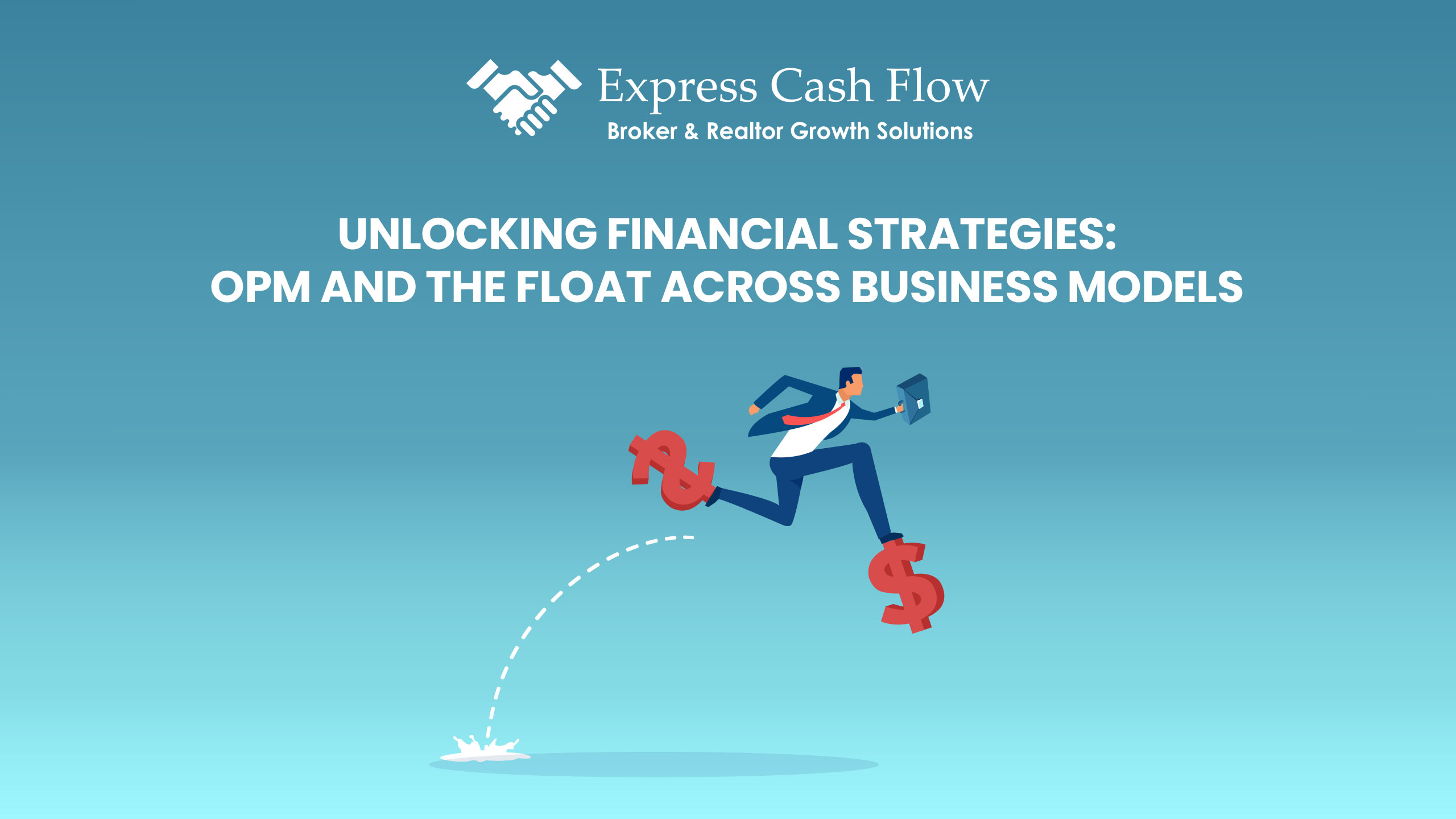In the world of real estate, market conditions can change rapidly, and agents must be prepared to navigate these shifts to maintain their business’s financial health. A slowing market, characterized by fewer transactions, longer sales cycles, and reduced buyer activity, can pose significant challenges for real estate agents, particularly when it comes to managing cash flow. Without a steady stream of income, covering expenses, investing in marketing, and planning for the future can become increasingly difficult. In this detailed post, we’ll explore practical tips for managing cash flow as a real estate agent in a slowing market, helping you stay financially stable and poised for success even in challenging times.
1. Reassess and Adjust Your Budget
In a slowing market, it’s essential to take a close look at your current budget and make adjustments to reflect the new reality. This means reevaluating your income projections, cutting unnecessary expenses, and reallocating resources to areas that will provide the most value.
How to Do It:
Review Your Income History: Start by analyzing your income over the past few years to identify patterns and trends. This will help you set realistic income expectations based on the current market conditions.
Identify Non-Essential Expenses: Categorize your expenses into essential and non-essential. While certain expenses like office rent, marketing, and transportation are necessary, others may be more discretionary. Consider cutting back on non-essential expenses, such as premium subscriptions, dining out, or high-end office supplies.
Focus on High-ROI Investments: In a slowing market, it’s crucial to invest in areas that will generate the highest return on investment (ROI). This could include digital marketing, client relationship management tools, or lead generation services that are more likely to result in closed deals.
2. Diversify Your Income Streams
Relying solely on commissions from home sales can be risky, especially in a slowing market. Diversifying your income streams can help stabilize your cash flow and reduce your financial vulnerability.
How to Do It:
Offer Property Management Services: If the sales market is slowing, consider offering property management services. This can provide a steady income stream, as landlords will still need professionals to manage their properties regardless of market conditions.
Expand into Rental Markets: In a slowing sales market, the rental market may remain strong as potential buyers choose to rent instead. Consider helping clients find rental properties or managing rental listings to generate additional income.
Provide Real Estate Consulting: Leverage your expertise by offering consulting services to clients, investors, or even other agents. This could include market analysis, investment advice, or assistance with property development projects.
Host Real Estate Workshops or Webinars: Share your knowledge with aspiring homebuyers, sellers, or investors by hosting workshops or webinars. Charging a fee for these educational sessions can provide another income stream while also positioning you as an expert in the field.
3. Maintain and Strengthen Client Relationships
In a slowing market, maintaining strong relationships with your existing clients becomes even more critical. Satisfied clients are more likely to refer you to others, return for future transactions, and provide positive testimonials that can help you attract new business.
How to Do It:
Stay in Regular Contact: Make an effort to keep in touch with your clients, even when they’re not actively buying or selling. Regular check-ins, market updates, and personalized messages can help you stay top of mind and build lasting relationships.
Offer Value-Added Services: Consider offering additional services to your clients, such as home staging advice, market analysis, or assistance with finding service providers (e.g., contractors, landscapers). These services can enhance your value and differentiate you from other agents.
Ask for Referrals and Testimonials: Don’t be afraid to ask satisfied clients for referrals or testimonials. Word-of-mouth marketing is powerful, especially in a slowing market, and can help you attract new clients without a significant financial investment.
4. Leverage Technology to Streamline Operations
In a slower market, maximizing efficiency is key to managing cash flow effectively. By leveraging technology, you can streamline your operations, reduce costs, and improve your ability to manage multiple aspects of your business simultaneously.
How to Do It:
Use Customer Relationship Management (CRM) Software: A good CRM system can help you manage client interactions, track leads, and automate follow-ups. This allows you to stay organized and responsive without spending additional time or money on administrative tasks.
Implement Virtual Tours and Open Houses: With fewer buyers in the market, it’s important to make your listings as accessible as possible. Virtual tours and open houses allow potential buyers to view properties from the comfort of their homes, increasing the chances of a sale without incurring the costs of hosting multiple in-person events.
Automate Marketing Campaigns: Use marketing automation tools to create and schedule email campaigns, social media posts, and digital ads. Automation not only saves time but also ensures that your marketing efforts are consistent and targeted, which is crucial in a competitive, slowing market.
Optimize Your Website for Lead Generation: Ensure that your website is optimized for search engines and designed to capture leads. Include clear calls to action, easy navigation, and valuable content that encourages visitors to contact you or sign up for newsletters.
5. Use Commission Advances to Maintain Cash Flow
One of the most challenging aspects of a slowing market is the extended time it may take to close deals. With longer sales cycles, it’s important to find ways to maintain cash flow so you can continue to cover expenses and invest in your business. Commission advances can be an effective tool to bridge the gap between closing a deal and receiving your commission check.
How to Do It:
Understand the Commission Advance Process: A commission advance allows you to access a portion of your earned commission before the deal officially closes. Companies like Express Cash Flow provide this service, offering real estate agents immediate funds to cover their business and personal expenses while waiting for the commission to come through.
Use Advances Strategically: While commission advances can be a lifesaver in a slowing market, it’s important to use them strategically. Consider using advances to cover essential expenses, such as marketing, office rent, or professional development, ensuring that you’re investing in areas that will help you generate more business.
Plan for Repayment: Keep in mind that commission advances are not loans, but they do require repayment once your commission is disbursed. Plan for this repayment in your budget to avoid any financial surprises down the road.
6. Focus on Niche Markets and Specializations
In a slower market, finding and focusing on a niche can help you stand out and attract a dedicated client base. Specializing in a specific area of real estate can also make you the go-to expert for that niche, helping you secure more consistent business.
How to Do It:
Identify a Growing Niche: Research market trends to identify niches that are growing or remain strong even in a slower market. This could include luxury homes, eco-friendly properties, senior housing, or investment properties.
Develop Expertise in Your Niche: Once you’ve identified your niche, invest in learning everything you can about it. This might involve taking specialized courses, earning certifications, or building relationships with other professionals in that area.
Market Yourself as a Specialist: Promote your niche expertise in your marketing materials, social media profiles, and website. Highlighting your specialization can attract clients who are specifically looking for an expert in that area, giving you an edge over generalist agents.
7. Plan for the Long Term
While managing day-to-day cash flow is crucial, it’s also important to keep an eye on the long term. Slowing markets are part of the real estate cycle, and while they can be challenging, they also present opportunities for growth and development.
How to Do It:
Set Long-Term Financial Goals: Establish clear financial goals for the next few years, including savings targets, investment plans, and retirement contributions. Having long-term goals can help you stay focused and motivated, even during challenging times.
Build a Strong Referral Network: Focus on building and maintaining a strong referral network. A robust network can provide a steady stream of business, even in a slow market, and can be a key asset in your long-term success.
Invest in Professional Development: Use slower periods as an opportunity to invest in your professional development. Attend industry conferences, take online courses, or earn new certifications that can enhance your skills and make you more competitive in the market.
Prepare for Market Rebounds: Remember that slowing markets eventually rebound. By staying active, maintaining your marketing efforts, and continuing to build relationships, you’ll be well-positioned to take advantage of opportunities when the market picks up again.
Conclusion:
Managing cash flow in a slowing real estate market requires a combination of strategic planning, diversification, and resourcefulness. By reassessing your budget, diversifying your income streams, and leveraging tools like commission advances, you can maintain financial stability and continue to grow your business even in challenging times. Focusing on client relationships, utilizing technology, and developing niche expertise can also help you stay competitive and position yourself for long-term success.
While a slowing market can be daunting, it also presents opportunities for real estate agents who are prepared to adapt and innovate. By following these tips and staying proactive, you can navigate the challenges of a slower market and emerge stronger, with a more resilient business and a clear path to future growth.










